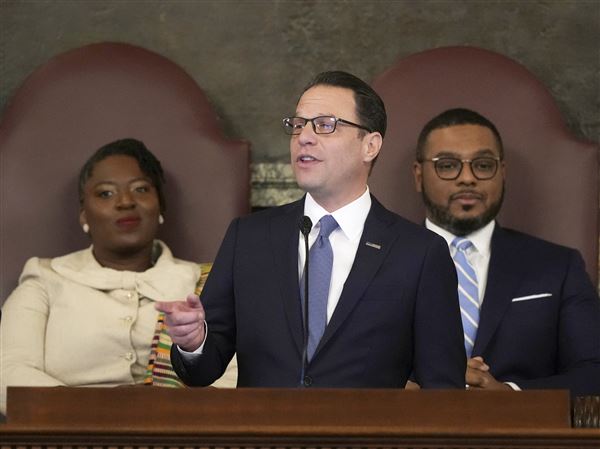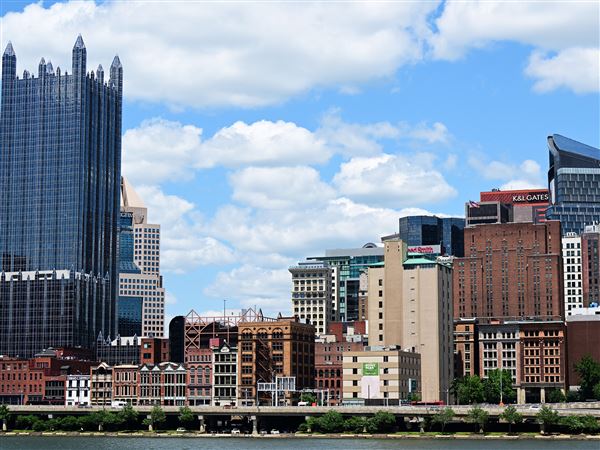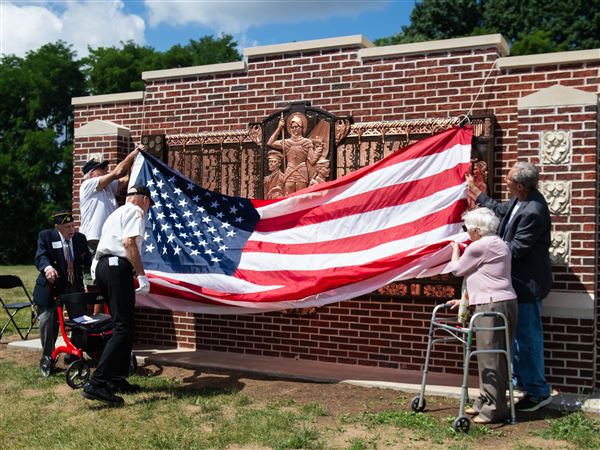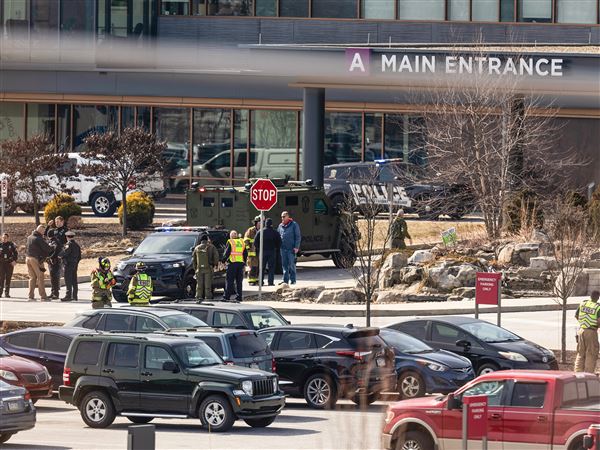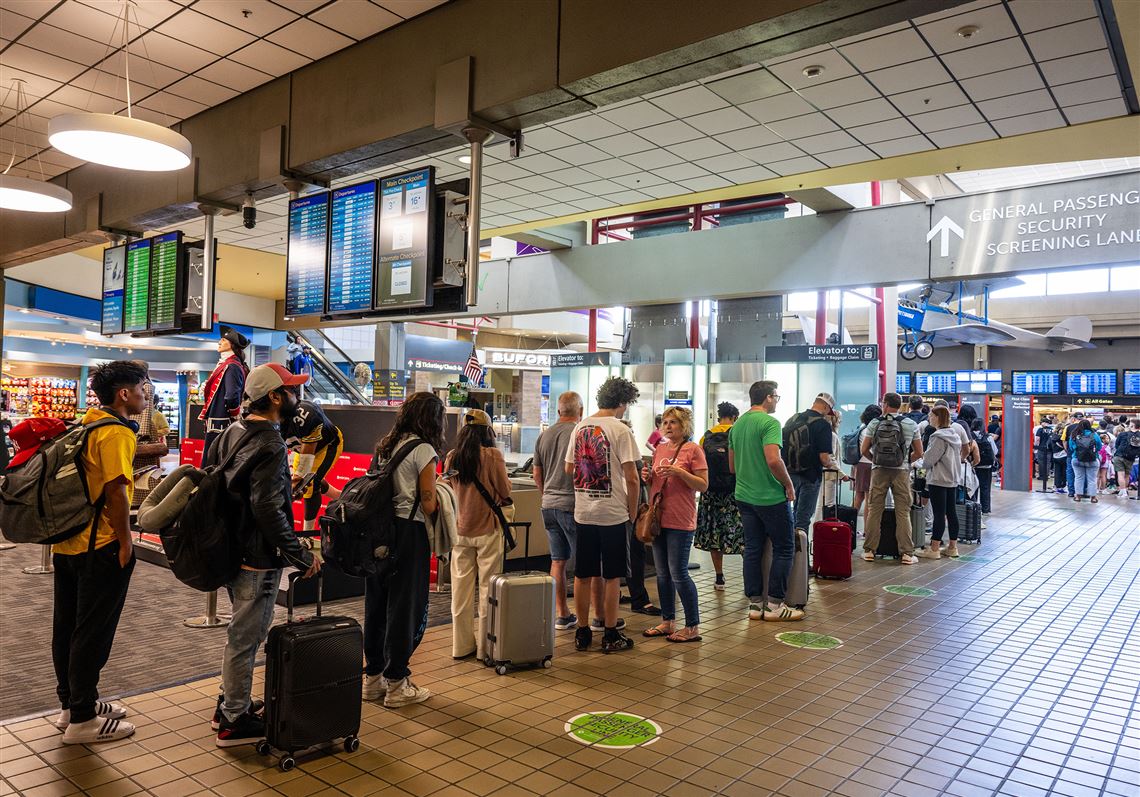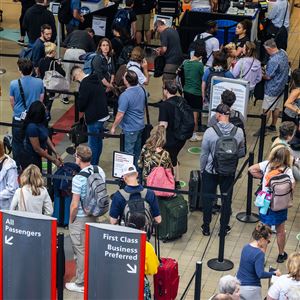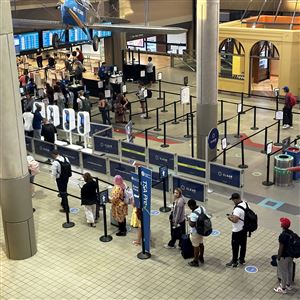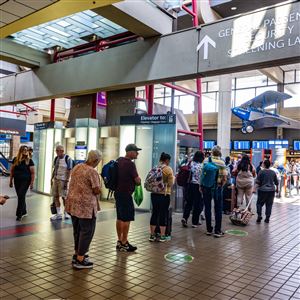The U.S. Transportation Security Administration is making changes to the checkpoints at Pittsburgh International Airport in a bid to remove early morning logjams that have resulted in long delays and missed flights.
Starting July 8, the TSA will use the airport’s alternate checkpoint on the ticketing level of the landside building exclusively from 4 a.m. to 7 a.m. to screen travelers enrolled in its PreCheck expedited screening program.
There will be no PreCheck lanes open at the main security checkpoint in the building during those times.
In announcing the move, the TSA stated that it had experimented with the idea for a few days last month to determine if it would improve passenger flow and “has decided to move forward with the change in early July.”
“The move will expedite the screening process, maximize space and minimize line wait times for all travelers at both checkpoints,” it stated.
After 7 a.m., a PreCheck line will be available at the main checkpoint through 8 p.m.
“The alternate checkpoint may reopen during the day on an as-needed basis, dependent on passenger volume to serve both TSA PreCheck and non-TSA PreCheck passengers,” it stated.
Travelers enrolled in the PreCheck program use a dedicated lane to quicken their screening and don’t have to remove their belts or shoes. Those enrolled in CLEAR, another program that involves expedited screening, will continue to use the main checkpoint at all times, according to the TSA.
Earlier this week, the airport, faced with an early morning crush at the checkpoints, advised travelers to arrive up to three hours early for flights leaving between 5 a.m. and 8 a.m. The TSA, in its announcement, encouraged travelers to do the same.
The advisory came days after the Allegheny County Airport Authority stated that last month was its busiest May in 17 years with 892,500 travelers using Pittsburgh International. It’s expecting crowds to grow larger later this summer.
In its announcement, the TSA stated that passenger volume during the early morning hours, particularly from 4 a.m. to 7 a.m., has exceeded the capacity of the checkpoints.
It pointed out that there are “a limited number of checkpoint lanes at Pittsburgh,” adding that the issue is expected to be resolved when the new landside terminal opens next year. That facility will have 13 security lanes, including one for employees, in one central location compared to the six currently at the main checkpoint.
The airport authority is continuing to work with the TSA “on ways to improve the passenger experience” this summer, spokesman Bob Kerlik said.
“When the new Pittsburgh International Airport opens in 2025, we will have an expanded, consolidated security checkpoint with more space and lanes that will speed up and streamline the security process,” he said.
So far through May, Pittsburgh International traffic is up 7.9% over the same period last year and has hit 99.8% of pre-pandemic 2019 levels. On Monday, nearly 20,000 travelers passed through the checkpoint, the highest number since the airport started cataloging daily passenger counts five years ago.
In July, the airport is expecting several airlines to offer more seats, or capacity, than ever before in Pittsburgh. They include Southwest, with 298,000 seats; American with 262,000; Spirit with 144,000; Frontier with 49,000; and Breeze with 29,000.
While the airport during the height of the US Airways hub handled upward of 20 million passengers a year, the vast majority of them were connecting travelers who never used the checkpoint.
Last year, the airport handled about 9.1 million travelers, with most of them originating their flights here. That has led to much busier checkpoints, Mr. Kerlik said.
“This is the busiest that checkpoint has ever been,” he maintained.
Across the country, other airports also are experiencing high traffic volume. On Sunday, the TSA screened 2.99 million travelers nationwide, the most in a single day in its 22-year history. In addition, seven of the TSA’s 10 busiest days have occurred since mid-May.
The agency estimates it will screen more than 32 million travelers between Thursday and Monday, July 8. That would represent a 5.4% increase over July 4 holiday traffic volumes last year.
Mark Belko: mbelko@post-gazette.com.
First Published: June 27, 2024, 1:56 p.m.
Updated: June 28, 2024, 5:17 p.m.
